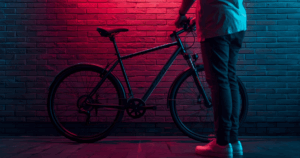Cycling isn’t just a form of exercise — it’s also a passport into the past, and Singapore’s heritage trails offer some of the most fascinating bike routes for uncovering layers of history hidden in plain sight. These carefully designed paths don’t just connect parks and streets; they weave together entire stories of migration, trade, colonialism, and cultural blending. From the bustling alleyways of Chinatown to the pastel-colored lanes of Katong, every turn reveals remnants of a different era.
Riding a bicycle allows you to slow down and absorb these details — the hand-painted tiles on a Peranakan shophouse, the scent of traditional spices wafting from an old shop, or the quiet dignity of a century-old temple tucked between modern buildings. The gentle rhythm of pedaling turns the ride into a kind of living documentary, where the chapters unfold in real time.
1. Why Heritage Trails and Cycling are a Perfect Match
There’s something about moving at a cyclist’s pace that makes history more tangible. In a car or bus, historic sites flash by in seconds, often reduced to vague shapes behind glass. On foot, you might notice more details but cover less ground, which can limit how many sites you visit in a day. Cycling offers the ideal middle ground — you travel far enough to see multiple neighborhoods, yet slowly enough to stop at any moment for a closer look.
Heritage trails in Singapore are intentionally mapped to connect culturally significant sites into continuous bike routes, often following old trade roads, colonial-era streets, or traditional neighborhood layouts. For example, the trail through Chinatown links temple complexes, clan association buildings, and restored shophouses that once served as living quarters and storefronts for early Chinese migrants. The trail in Little India strings together religious landmarks like the Sri Veeramakaliamman Temple with wet markets and spice shops, recreating the sensory overload early settlers would have experienced.
Cycling through these spaces also means interacting with the environment in a way history books can’t replicate. You might feel the slight incline of a hill once used for military advantage, hear the echoes of street hawkers in narrow lanes, or smell the incense burning during a festival procession — moments that make history feel alive.
2. Planning Your Heritage Cycling Experience
A heritage cycling journey starts with careful planning. First, choose your bike routes based on your interest in specific cultural or historical themes. If you’re fascinated by maritime history, consider starting at Fort Canning Park and riding toward the Singapore River, tracing the paths traders once took. If colonial architecture draws you in, plot a route that includes the Civic District, where neoclassical buildings like the Victoria Theatre and the former Supreme Court stand as monuments to British rule.
Modern cycling apps can help you map out safe and efficient bike routes, but it’s worth cross-referencing with the National Heritage Board’s trail guides, which often point out lesser-known landmarks. For example, a digital map might simply mark a road, but the heritage guide could tell you that the unassuming lane was once a burial ground for early Hokkien settlers.
Preparation is just as important as planning. Bring sufficient water — many heritage areas offer limited shaded spots — and consider wearing breathable fabrics. For longer trails, pack light snacks to enjoy during rest stops. If your route includes cobblestone streets or uneven surfaces, check that your bike’s tires are well-inflated and suspension is in good condition. And because heritage districts are often busy with pedestrians, especially on weekends, plan your rides early in the morning for a calmer experience.
3. Singapore’s Top Heritage Trails to Explore by Bike
a) Kampong Glam Heritage District
Kampong Glam isn’t just a neighborhood — it’s a living museum of Malay, Arab, and Bugis heritage. Cycling through its bike routes, you’ll immediately be drawn to the grand Sultan Mosque, its golden dome gleaming in the sunlight. Built in 1824 for Sultan Hussein Shah, it remains a focal point for the Muslim community. From there, Arab Street and Haji Lane beckon with textile shops, carpet merchants, and colorful murals.
One of the joys of exploring Kampong Glam by bike is the ease of stopping at small cafes hidden in side streets. You might pause for a strong kopi or a plate of nasi padang, savoring flavors that have been passed down for generations. In the evenings, the area comes alive with soft lighting and music, making it worth planning a late-afternoon ride that transitions into nightfall.
b) Chinatown Heritage Trail
Few bike routes are as rich in layered history as those running through Chinatown. This district tells the story of Chinese immigrants who arrived in the 19th century, bringing with them trades, traditions, and an unyielding work ethic. A ride down South Bridge Road takes you past the Buddha Tooth Relic Temple, its ornate red-and-gold structure contrasting sharply with the modern high-rises nearby.
Branch off into smaller streets like Ann Siang Hill, where restored shophouses now host trendy eateries but still retain their original façade. Some buildings display intricate carvings or shutters painted in the traditional blue-and-green hues believed to ward off evil spirits. Riding here during Chinese New Year offers an entirely different experience — the streets burst with lanterns, lion dances, and the sound of drums echoing between the buildings.
c) Little India Cultural Circuit
Little India is a feast for the senses. Along its bike routes, you’ll encounter markets brimming with jasmine garlands, spice shops with shelves stacked high with turmeric and cumin, and goldsmith stores that glitter in the sunlight. The Sri Veeramakaliamman Temple, with its towering gopuram covered in colorful deities, stands as a testament to the artistry and devotion of the Tamil community.
Cycling in Little India requires a bit more alertness due to pedestrian and vehicle traffic, but starting early in the morning allows for a more relaxed pace. A rewarding stop is Tekka Centre, where you can enjoy a hearty roti prata breakfast before continuing your ride. Exploring side streets like Dunlop Street and Campbell Lane reveals murals depicting scenes from Indian festivals and rural life, adding visual richness to the historical narrative.
d) Fort Canning Park Historical Loop
Fort Canning Park blends lush greenery with centuries of history. Once the seat of Malay royalty, later a British fort, and eventually a military command center during World War II, the park’s terrain is steeped in strategic importance. Cycling here means tackling some gentle hills, but each climb rewards you with sweeping views of the city and shaded rest spots under giant rain trees.
Notable sites include the Battle Box, an underground command center used by the British during the war, and the Fort Gate, a remnant of the fortifications built in the 19th century. The park also houses archaeological excavations revealing artifacts from the 14th-century kingdom of Singapura. Incorporating Fort Canning into your bike routes offers both a physical workout and a deep dive into the city’s military past.
e) Katong–Joo Chiat Peranakan Heritage Trail
The Katong–Joo Chiat area is a vibrant showcase of Peranakan culture, where pastel-colored shophouses line the streets like a row of carefully arranged sweets. Cycling along these bike routes, you’ll notice elaborate tile work, wooden shutters, and floral motifs that speak to the community’s blended Chinese and Malay heritage.
Stopping for a bowl of laksa — said to have originated here — is almost a rite of passage. Bakeries selling kueh (traditional bite-sized snacks) also dot the area, making it easy to turn your ride into a culinary journey. The slower traffic flow in Joo Chiat makes it ideal for relaxed cycling, allowing time to linger over architectural details or chat with shop owners about the history of their buildings.
4. Discovering Hidden Heritage Gems
Beyond the well-publicized trails, Singapore hides lesser-known bike routes that offer equally compelling stories. Jalan Besar, for example, is filled with pre-war buildings and was once home to numerous sports clubs and factories. Cycling here, you might spot old signboards in faded lettering — relics of a time when the area bustled with small-scale manufacturing.
Tiong Bahru, another gem, showcases art deco architecture and has transformed into a hub for independent bookstores and cafes. Its curved balconies, spiral staircases, and symmetrical designs are reminders of 1930s modernist influences. Riding through these neighborhoods feels like flipping through an illustrated history book, with each corner revealing a new chapter.
5. Tips for a Meaningful Heritage Ride
- Ride Early: Morning light enhances architectural details and keeps the temperature comfortable.
- Bring a Camera: Heritage rides are full of unexpected visual treasures.
- Research Beforehand: Knowing the backstory enriches your appreciation of each stop.
- Respect the Spaces: Many heritage buildings remain in use — be mindful of residents and businesses.
- Mix Old and New: Pair historical sites with modern attractions to appreciate the city’s evolution.
By applying these tips, your bike routes become more than a checklist of stops — they turn into immersive narratives that connect you to the city’s living history.
6. Heritage Cycling as Sustainable Tourism
Exploring heritage bike routes by bike is a low-impact way to experience the city. It reduces your carbon footprint while encouraging interactions with local businesses. Stopping at a small family-run shop for a cold drink or buying handmade crafts directly supports the community and helps keep traditions alive.
Well-maintained bike routes also encourage repeat visits, ensuring that heritage preservation efforts receive ongoing attention without overwhelming the sites. In this way, heritage cycling benefits both riders and the neighborhoods they explore.
7. Creating Your Own Heritage Trail
Once you’ve explored the main heritage circuits, try designing your own. Combine elements from different trails — start in Kampong Glam, weave through Bugis, pass by the Civic District, and end in Chinatown. This multi-neighborhood approach allows you to experience diverse architectural styles, culinary traditions, and historical eras in a single day.
Using GPS-enabled cycling apps, you can create bike routes tailored to your interests, whether that’s religious landmarks, colonial history, or street art. Over time, you might even develop personal heritage bike routes that become part of your regular cycling routine.
Conclusion
Cycling through Singapore’s heritage bike routes transforms the act of riding into a cultural adventure. Every stop along your chosen bike routes tells a fragment of a larger story — one of migration, resilience, and evolving identities. From the golden domes of Kampong Glam to the colorful façades of Joo Chiat, the city’s history unfolds with each pedal stroke.
The next time you plan a ride, make it more than just a workout. Make it a journey through living history, where the streets themselves are the storytellers and you are the traveler discovering them one turn of the wheel at a time.





